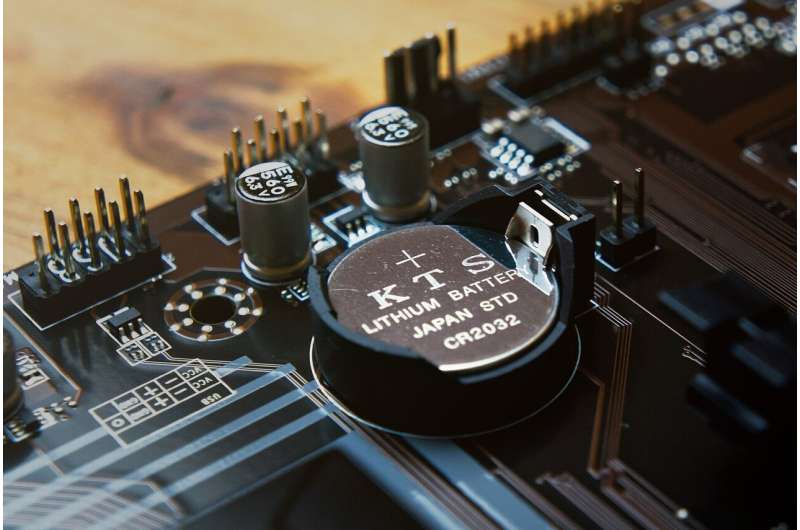
If button cells are swallowed, they may get stuck in the esophagus. This can sometimes lead to severe damage to the mucous membranes. “Over the past 10 years, clinics and poison centers have reported several hundred cases to the BfR in which button cells have been swallowed,” reports BfR President Professor Hensel.
Rapid diagnosis and, if necessary, removal of the button cell is crucial for preventing serious complications. “If it is suspected that a button cell has been swallowed, children should be examined in a clinic immediately,” advises Professor Hensel.
Button cells are small, round battery cells. Due to the increasing use of battery-operated devices in all areas of daily life, children easily come into contact with button cells. If they are swallowed, they can get stuck in the esophagus and cause serious tissue damage.
Contact with moist mucous membranes results in a current flow. Hydroxide ions form at the interface between the button cell and the mucous membrane. This can lead to severe burns.
There is a particular risk for small children. Larger button cells are particularly likely to get stuck due to the narrowness of the esophagus. As small children are often not yet able to express themselves adequately, swallowing can go unrecognized, resulting in a delayed diagnosis.
If the button cell gets stuck in the esophagus, the child often shows no symptoms at first, or there are unspecific symptoms such as coughing, loss of appetite, vomiting and fever.
When examining children with these or similar symptoms, the possibility of swallowing a button cell should therefore also be considered. If it is suspected that a button cell has been swallowed, the child should be X-rayed immediately to ensure rapid endoscopic recovery of the button cell if necessary.
After only two hours of contact, chemical burns can lead to deep tissue damage in the esophagus, esophageal perforation and damage of surrounding structures including the aorta and neighboring airways. Inflammatory processes and bleeding that is difficult to control are further complications, which in rare cases can also lead to a fatal outcome.
During the healing process, a scarred narrowing (stenosis) of the esophagus can occur. This can result in lifelong impairment when swallowing food. There are also indications that the probability of esophageal cancer occurring could be increased.
The longer the contact with the mucous membrane lasts and the more the button cell is charged, the more pronounced the impairments to health can be. Even apparently discharged button cells can still cause serious damage.
In most cases, swallowed button cells can pass through the esophagus. Complications are then only rarely to be expected. In these cases, it is usually sufficient under medical supervision to wait for the button cell to pass through the stool.
The BfR Commission “Assessment of Poisoning” advises an immediate X-ray examination at a pediatric clinic if it is suspected that a button cell has been swallowed. An ambulance should be called to ensure that a diagnosis is made as quickly as possible. If there is uncertainty in the medical diagnosis and treatment of accidents involving button cells, clinics are strongly advised to consult a poison center.
Doctors report cases of poisoning, including suspected cases, to the National Poisoning Register unit at the BfR. In addition to poisoning by chemical substances and poisonous plants, this reporting obligation also includes the ingestion of button cells and the associated risk of chemical burns. The basis for the reporting obligation is §16e of the Chemicals Act.
Provided by
BfR Federal Institute for Risk Assessment
Citation:
Button cells: Serious health damage possible for small children if swallowed (2024, October 1)
retrieved 6 October 2024
from https://medicalxpress.com/news/2024-10-button-cells-health-small-children.html
This document is subject to copyright. Apart from any fair dealing for the purpose of private study or research, no
part may be reproduced without the written permission. The content is provided for information purposes only.


